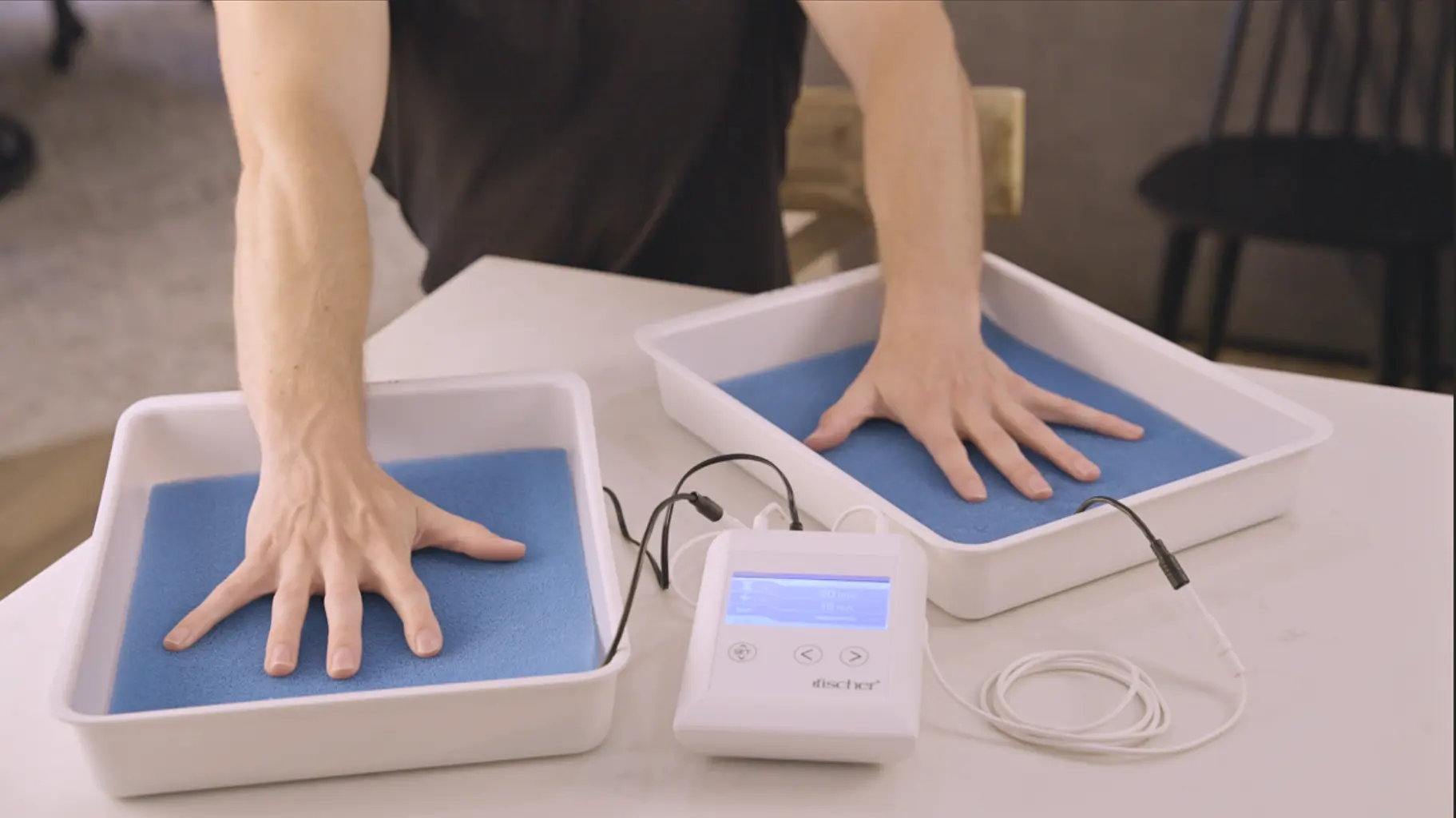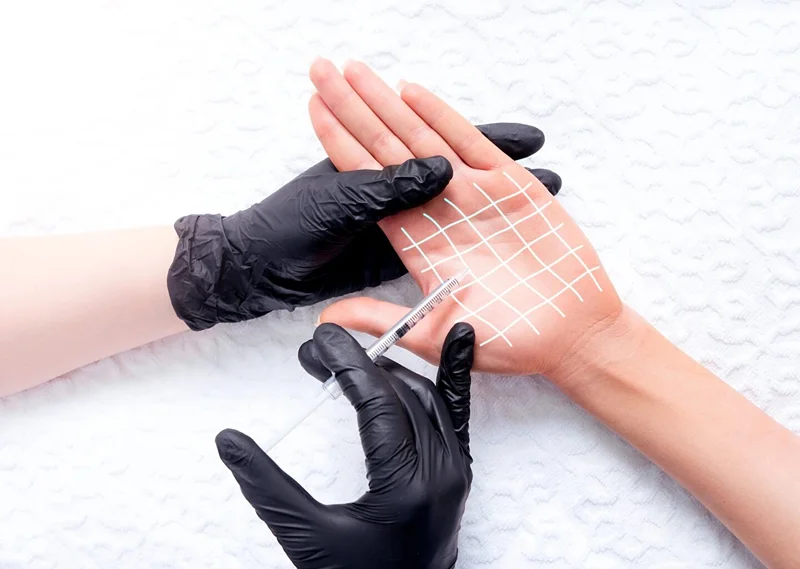Best Dermatology Approaches for Sweaty Hands Treatment: Tips and Techniques
Best Dermatology Approaches for Sweaty Hands Treatment: Tips and Techniques
Blog Article
Revealing the Complexities of Excessive Sweating: A Comprehensive Overview to Diagnosis and Administration
Too much sweating, clinically understood as hyperhidrosis, is a condition that impacts a significant number of individuals and can have a profound influence on their top quality of life. While sweating is a natural bodily function, its overactivity in hyperhidrosis presents a distinct set of challenges that often go beyond mere pain.

Recognizing Hyperhidrosis Causes
Hyperhidrosis causes can be credited to different elements such as genetics, hormone inequalities, and particular clinical problems. Genetics play a significant duty in key focal hyperhidrosis, where individuals inherit the condition from their household members. This type of hyperhidrosis usually materializes in details areas like the hands, soles of the feet, underarms, and face. Hormonal inequalities, specifically an overactive thyroid gland or menopausal modifications, can likewise trigger too much sweating. Additionally, particular medical problems such as diabetes mellitus, cardiovascular disease, and infections can bring about secondary generalized hyperhidrosis. These underlying health concerns can interfere with the body's natural air conditioning system, causing the sweat glands to end up being overactive. Recognizing the source of hyperhidrosis is vital in diagnosing and effectively managing this condition. By determining the details factors adding to excessive sweating, medical care carriers can customize therapy plans to deal with the underlying reason, providing alleviation and enhancing the lifestyle for people impacted by hyperhidrosis.
Identifying Hyperhidrosis Symptoms

Moreover, hyperhidrosis signs and symptoms might materialize in social and psychological distress, as people may feel humiliated or nervous concerning their sweating, causing avoidance of social situations (How to stop sweaty hands). Additionally, duplicated episodes of too much sweating can lead to skin maceration, fungal infections, and an overall decline in self-confidence
Diagnostic Process for Hyperhidrosis
Initiating the analysis procedure for too much sweating includes complete analysis of the individual's clinical history and physical exam. Making inquiries concerning the beginning, period, and activates of sweating episodes is crucial to distinguish in between primary focal hyperhidrosis and second generalized hyperhidrosis. Clinical history must additionally consist of questions regarding drugs, medical problems, and household background of hyperhidrosis.
During the physical exam, particular focus is paid to the areas affected by sweating. The medical care copyright may analyze the extent of sweating, check for indicators of underlying conditions, and examine the influence of sweating on the individual's lifestyle. Additionally, specific examinations like the gravimetric test, starch-iodine test, or skin conductance dimensions might be carried out to quantify the amount of sweat created.
Moreover, in cases where secondary hyperhidrosis is thought, extra tests such as blood tests, urine examinations, and imaging research studies might be suggested to determine the underlying reason of too much sweating. The analysis procedure aims to precisely figure out the type and reason of hyperhidrosis to lead ideal monitoring approaches.
Therapy Options for Hyperhidrosis
When attending to extreme sweating, various treatment options are readily available to alleviate symptoms and improve the person's lifestyle. The therapy technique for hyperhidrosis depends upon the intensity of signs and the client's response to first treatments.
Topical treatments, such as aluminum-based antiperspirants, are often advised as the first line of defense for taking care of moderate cases of hyperhidrosis. For individuals with more serious signs, oral drugs like anticholinergics may be suggested to help reduce sweating.

Effective Monitoring Approaches
To efficiently manage hyperhidrosis, a extensive and personalized therapy strategy customized to the individual's particular requirements and feedback to previous therapies is important. This plan may include a combination of therapeutic approaches, consisting of way of living alterations, topical therapies, dental drugs, botulinum contaminant shots, iontophoresis, and in serious cases, surgical treatments like sweat gland removal or sympathectomy. Way of living alterations such as using moisture-wicking clothes, using antiperspirants, and practicing stress-reducing techniques can complement clinical interventions. Topical antiperspirants including aluminum chloride are usually the first-line treatment, with stronger solutions offered for resistant instances. Dental medications like anticholinergics may be recommended for generalized hyperhidrosis. Botulinum contaminant shots are effective for focal hyperhidrosis, giving short-lived alleviation by obstructing the launch of acetylcholine. Iontophoresis, involving using a low electrical existing to minimize sweat gland task, can be useful for both palmoplantar and axillary hyperhidrosis. Surgical options are commonly reserved for extreme, refractory cases and call for careful factor to consider of dangers and advantages. A multidisciplinary strategy go to this site involving dermatologists, medical care doctors, and, if necessary, doctors, can optimize the monitoring of hyperhidrosis.
Final Thought
In final thought, hyperhidrosis is a condition characterized by excessive sweating, which can greatly impact a person's top quality of life. With correct medical diagnosis and administration methods, individuals suffering from hyperhidrosis can find relief and enhance their total health.
Too much sweating, clinically known as hyperhidrosis, is a problem that impacts a considerable number of individuals and can have an extensive effect on their high quality of life. By identifying the specific factors adding to best site extreme sweating, health care service providers can customize therapy plans to attend to the underlying reason, using relief and boosting the quality of life for individuals impacted by hyperhidrosis.
Hyperhidrosis, characterized by too much sweating beyond what is necessary for controling body temperature level, can substantially impact a person's high quality of life. Inquiring concerning the start, duration, and causes of sweating episodes is vital to distinguish in between primary focal hyperhidrosis and second generalized hyperhidrosis. How to stop sweaty hands.In verdict, hyperhidrosis is a condition defined by excessive sweating, which can considerably impact a person's high quality of life
Report this page